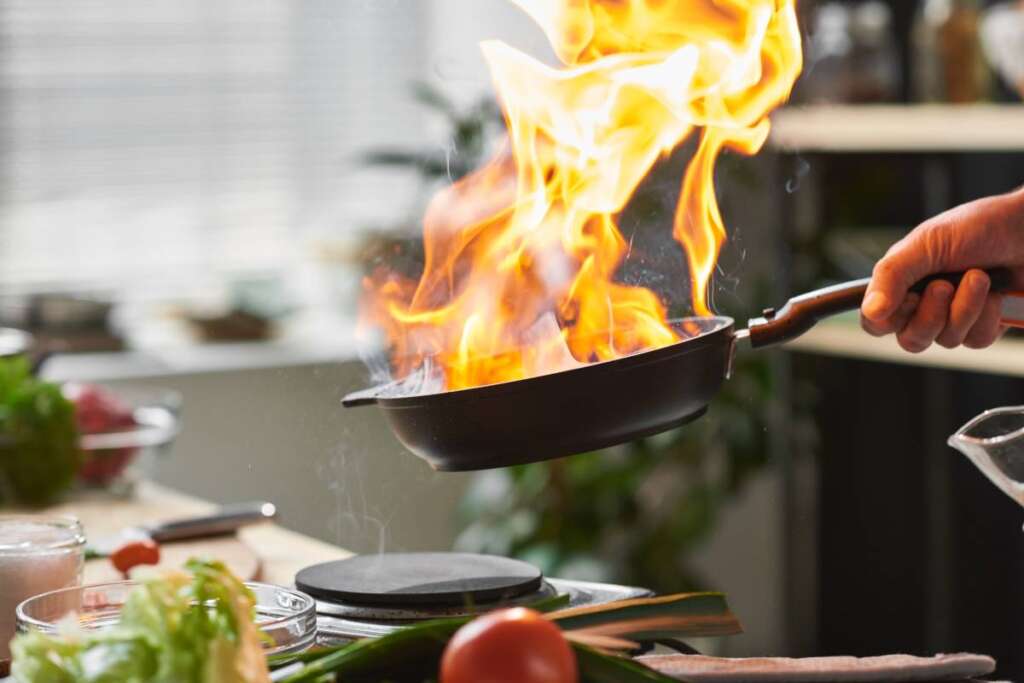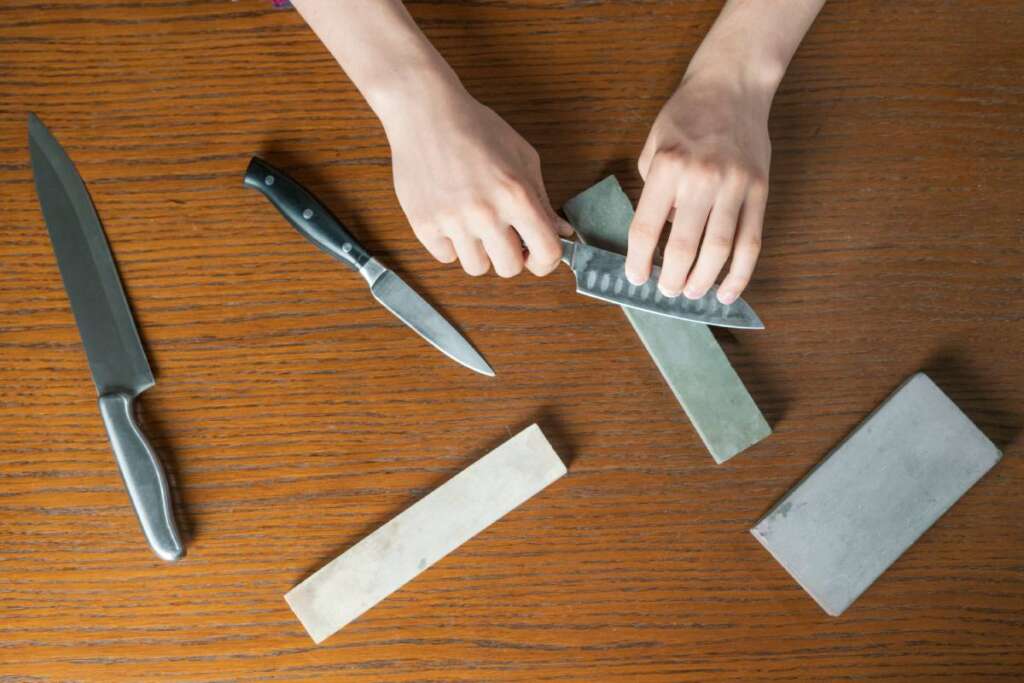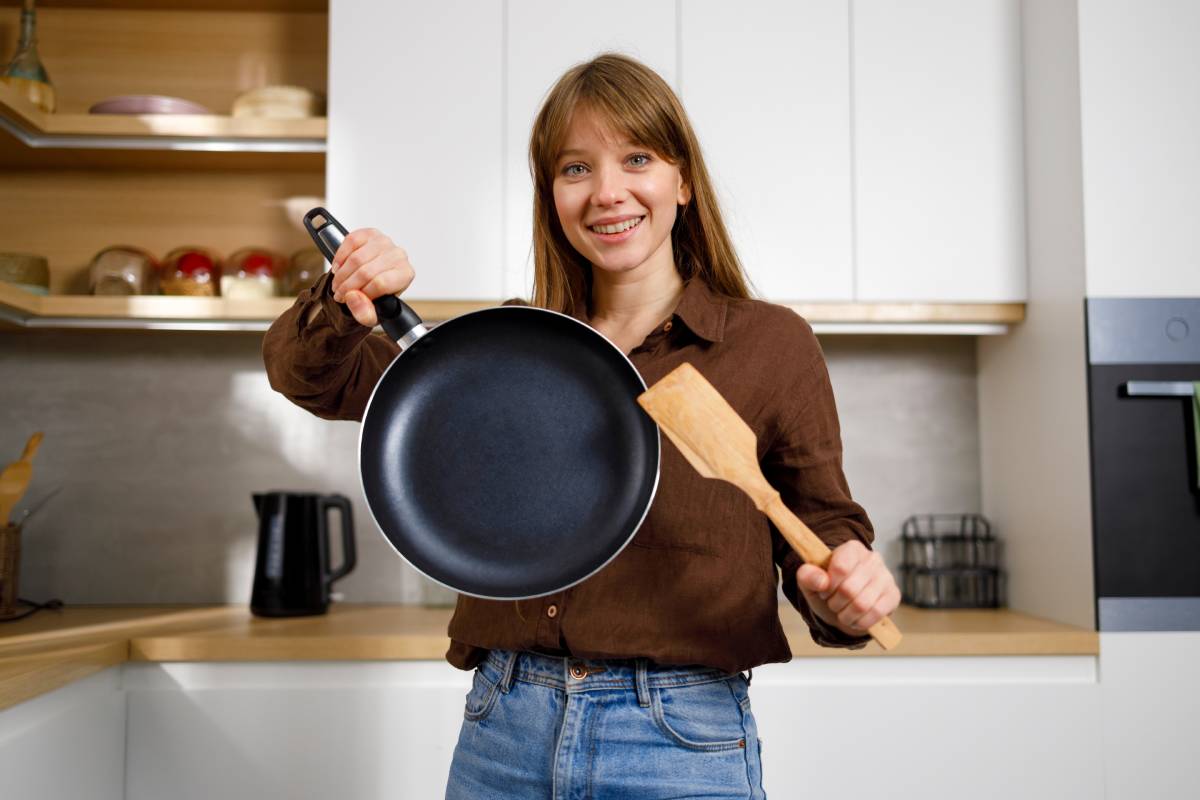Cast iron cookware is a beloved kitchen essential worldwide, thanks to its great heat retention, durability, and versatility. Whether you’re a chef or a home cook, its real charm lies in the rich flavor it adds to every dish.
However, cast iron requires proper care especially with seasoning and cleaning.This guide shares key tips for using cast iron correctly, explains whether it needs washing after each use, and highlights a few drawbacks.
With the right knowledge, you’ll cook with confidence and enjoy tasty meals for years to come.
The Secret to Cooking with Cast Iron
Cast iron has earned a reputation for being one of the most reliable and versatile cookware materials around. But what’s the secret to cooking with it? There are several factors that contribute to the success of cast iron cookware:
Heat Retention:
Cast iron is known for its ability to retain heat for long periods. Unlike other types of cookware that can cool down quickly when the heat is reduced, cast iron holds onto heat, providing consistent cooking temperatures.
This makes it ideal for high-heat cooking techniques, like searing, frying, and baking. It also means you don’t need to continuously adjust the temperature while cooking.
Even Heat Distribution:
One of the biggest advantages of cast iron cookware is that it distributes heat evenly. This is particularly important when preparing dishes that require consistent temperatures, such as frying or simmering. The even heat distribution reduces the chances of hot spots, ensuring that food is cooked uniformly.
Naturally Non-Stick Surface:
A well-seasoned cast iron skillet or pan provides a non-stick surface that improves with each use. This seasoning process involves building up layers of oil or fat that bond with the metal. Over time, this seasoning makes cooking smoother, and food releases easily from the pan. It’s one of the secrets to cooking with cast iron effectively.
Versatility:
Cast iron can be used on any heat source, whether it’s a stovetop, oven, grill, or campfire. This makes it an excellent tool for a variety of cooking methods, including baking, broiling, frying, and even slow-cooking. You can even use it to bake cornbread, pizza, or even cakes, as cast iron distributes heat evenly from bottom to top.
Flavor Enhancement:
Over time, cast iron develops a natural patina that adds a unique, deep flavor to foods. As you cook with it, the seasoning from the cast iron becomes infused with the food, enhancing the taste of dishes. This is especially true for savory foods like steaks, roasts, and stir-fries.
Should You Wash Cast Iron After Every Use?
One of the most common questions about cast iron cookware is whether you should wash it after each use. While the answer isn’t as straightforward as a simple “yes” or “no,” there are key considerations to keep in mind:
- Cleaning Cast Iron After CookingThe best practice for cleaning cast iron is to avoid using soap, especially harsh detergents, which can strip away the seasoning. After cooking, allow the pan to cool slightly and clean it using hot water. Scrub off any food remnants with a stiff brush or non-abrasive scrub pad. If the pan has stubborn food stuck, add some coarse salt to act as a natural abrasive scrubber.
- Re-seasoningAfter cleaning, dry the cast iron thoroughly. Moisture is the enemy of cast iron, as it can cause rusting. Once dry, apply a light layer of oil to maintain the seasoning. This oil helps create an additional layer of seasoning, contributing to the pan’s non-stick properties and preventing rust.
- When to Use SoapWhile most cast iron experts advise against using soap, some may occasionally choose to use mild soap if the pan has built-up residue. Even in this case, it’s important to immediately re-season the pan afterward.
- Washing Cast Iron After Every UseTechnically, you don’t need to wash cast iron after every single use if the pan is clean and dry. For instance, if you’ve just cooked something like scrambled eggs or a steak, and the pan is still in good condition, you can wipe it down with a paper towel and store it.

Disadvantages of Cast Iron Cookware
While cast iron is a favorite among many chefs and home cooks, it’s not without its disadvantages. Here are a few reasons why some might hesitate to use cast iron:
- Heavy Weight: Cast iron cookware is notorious for being heavy. While this weight contributes to its durability and excellent heat retention, it can also be cumbersome, especially for individuals who have trouble handling heavy pots or pans. If you’re someone who struggles with lifting or maneuvering heavy cookware, this could be a significant downside.
- Rusting: Cast iron is prone to rust if not cared for properly. Since the material is highly reactive to moisture, it’s crucial to keep the cookware dry after washing and to regularly apply a thin layer of oil to protect the surface. If rust does develop, it can be cleaned off, but it requires effort and may necessitate re-seasoning the pan.
- Seasoning Maintenance: While the seasoning on a cast iron pan improves with use, it can also be damaged if not cared for properly. For instance, cooking acidic foods like tomatoes or vinegar-based sauces can wear down the seasoning. Cast iron also needs to be periodically re-seasoned to maintain its non-stick surface. This can be time-consuming, requiring extra care after each use.
- Heat Sensitivity: Cast iron retains heat exceptionally well, but this can also be a disadvantage if not used carefully. The pan can become extremely hot and take a while to cool down, which can cause burns if not handled with care. It’s important to use oven mitts or handles to avoid accidents when cooking with cast iron.
- Not Ideal for Every Type of Cooking: While cast iron is incredibly versatile, it’s not the best choice for every recipe. For example, if you’re cooking something delicate like fish or eggs, a non-stick pan might be a better choice to avoid sticking. Similarly, if you’re preparing a dish that requires precise temperature control or low and even heat, other cookware might be more suitable.

Knife Sharpening: The Perfect Companion to Cast Iron Cooking
While mastering cast iron is essential to elevating your cooking, equally important is maintaining a sharp kitchen knife. A dull knife can slow you down, crush ingredients instead of slicing cleanly, and increase the risk of injury due to slippage.
Why Sharpening Matters
A properly sharpened knife improves efficiency, enhances presentation, and makes meal prep safer. When cooking with cast iron, which often involves searing meats and chopping hearty vegetables, a sharp knife ensures that your prep work matches the high performance of your cookware.
How to Keep Knives Sharp
- Use a whetstone or a honing rod regularly to maintain the edge.
- Store knives properly, away from other utensils that can dull the blade.
- Avoid cutting on hard surfaces like glass or granite—use wood or plastic cutting boards instead.
- Get your knives professionally sharpened if you notice them becoming less effective.
Conclusion
Cooking with cast iron offers many benefits, from its ability to retain and distribute heat evenly to its naturally non-stick surface. The key to success with cast iron lies in understanding how to care for it properly.
While washing it after each use is not necessary, regular cleaning, proper drying, and occasional re-seasoning will keep your cast iron cookware in excellent condition.
Though it has some disadvantages, such as its weight and susceptibility to rust, the benefits far outweigh these challenges, making it an indispensable tool in many kitchens.
With the right care, a cast iron skillet can last for generations, making it a valuable investment for any cook.

